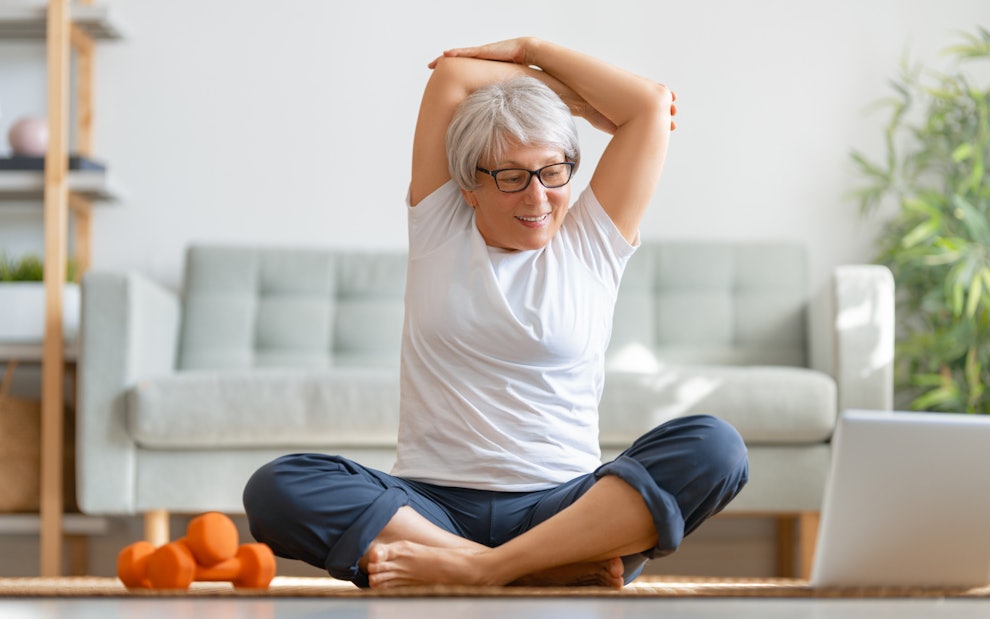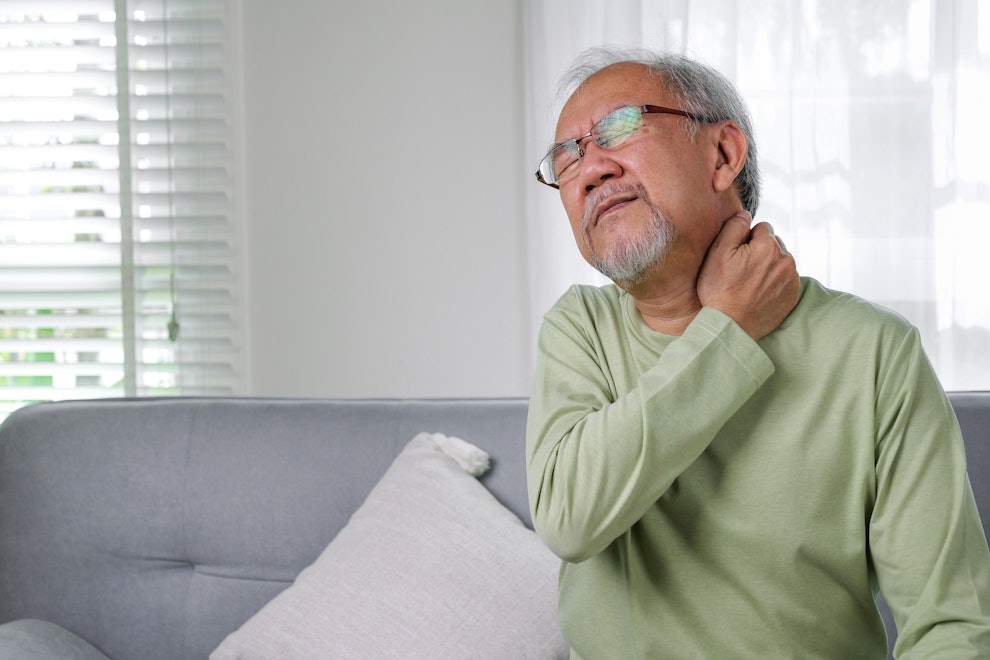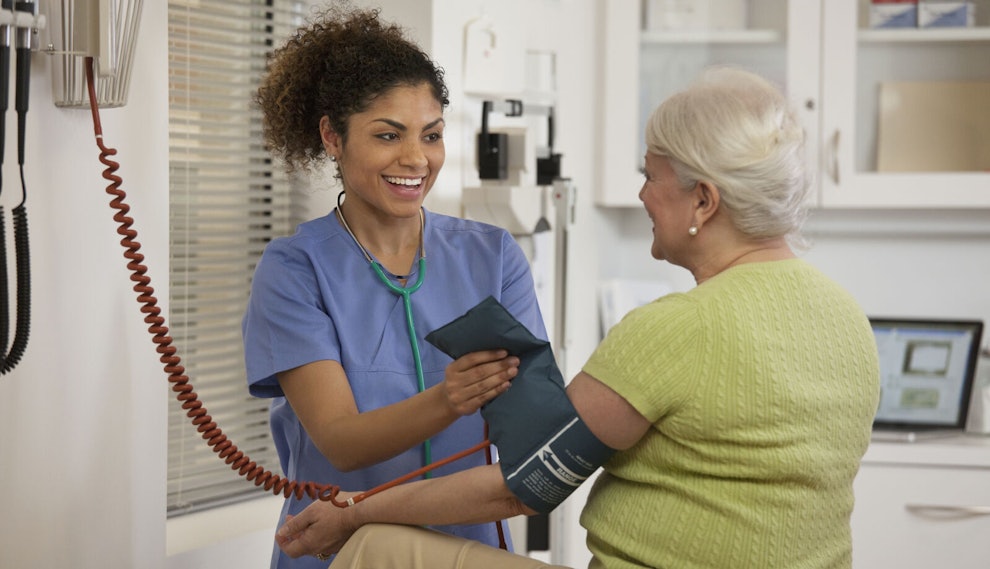Article at a glance
- Blood circulation is a vital part of a healthy body as it carries oxygen and nutrients to muscles, organs, and other parts of your body. Without these nutrients and oxygen, your body struggles to get what it needs to perform at its best.
- Symptoms of poor circulation include muscle aches, pale or blue skin, numbness and tingling, bulging veins, chest pain, and swelling. These symptoms most often appear in the lower arms and legs.
- If you’re wondering how to improve blood circulation, there are simple steps you can take to help your heart beat its best again. These include increased activity, decreased stress, and supplements for heart health.
- If you’re experiencing symptoms of poor blood circulation, contact your doctor to help you identify the cause.

Your entire body needs oxygen and nutrients to feel active and healthy and to function properly. The blood flowing through your body — or circulation — carries these nutrients, so it’s important to improve blood circulation. You can take simple, healthy steps each day to avoid common symptoms of poor circulation such as muscle aches, cold fingers and toes, and swelling. There are many ways to help improve circulation — including going for a walk, eating more fish, and putting your feet up. And, be sure to visit with your doctor if you are experiencing these symptoms or think you might have circulation issues.
What is blood circulation?
Blood circulation is the way that blood moves through your body. Your circulatory system includes your heart, veins, arteries, and blood vessels. These all work together in a closed system to make sure that your body stays healthy and has the oxygen it needs.
Your heart is a muscle that acts like a pump that moves blood to your muscles, organs, and other parts of your body. This is important because your blood spreads oxygen, hormones, and nutrients throughout your body. It also helps remove waste like carbon dioxide.
Symptoms of Poor Blood Circulation

When you have problems with the way your blood moves around your body, this is called “poor blood circulation.” It means that parts of your body are not getting what they need to stay healthy. You’ll often notice symptoms in the parts of your body that are the furthest away from your heart, such as in your toes, feet, legs, fingers, hands, and arms. Symptoms of poor blood circulation include the following.
Muscles Ache or Cramps
When muscles do not get enough oxygen, they can cramp or ache. This can happen to athletes playing sports, and it’s a similar feeling to when it happens because of poor blood circulation.
Pale or Blue Skin Colors
If you notice changes to the color of your skin at your extremities, you could have poor circulation. This includes pale, splotchy skin as well as blue or reddish tones in your skin.
Cold Fingers and Toes
These are very common symptoms of poor circulation. Even in warm weather, your fingers or toes might feel cold and can be difficult to warm.
Bulging Veins
Bulging, or varicose, veins happen when the veins fill with blood and become larger. You’ll notice pain, heaviness, swelling, tightness, and irritation around the bulging veins.
Numbness or Tingling
Feeling tingling or numbness in your hands or feet is another classic symptom of poor blood circulation.
Chest Pain
This symptom happens when the heart muscles struggle to get the blood they need. Always take chest pain seriously and consult your doctor or emergency services if needed.
Swelling
Poor circulation causes swelling, also known as “edema,” because blood can pool in parts of your body. You’ll notice the symptoms of swelling (warm and tight skin, pain, and stiffness in the joints) in your legs, ankles, and feet.
Causes of poor blood circulation
There are several causes of poor blood circulation, but the most common are
- High blood pressure
- Smoking
- Obesity
- Diabetes
- Peripheral artery disease
- Atherosclerosis (buildup of plaque in your arteries)
- Varicose veins
- Raynaud’s disease
How to Boost Your Circulation

Improving blood circulation means your blood will flow more consistently throughout your body. You can speak to your doctors about medication options for poor circulation, but if you’re wondering how to improve blood circulation naturally, there are several methods listed below that will help you get your blood pumping.
Quit Smoking
Smoking is a major cause of poor blood circulation. Nicotine increases your pulse rate and blood pressure. It also causes your arteries to narrow. Quitting smoking will help to prevent worsening blood circulation issues and can lead to better health over time.
Exercise
The word “aerobic” means “with oxygen.” Aerobic exercises are ones that get your heart pumping and circulating oxygenated blood throughout your body. These include activities like walking, running, cycling, and swimming. Aerobic exercises will help your body get the nutrients and oxygen it needs with added benefits like weight loss.
Take Iron Supplements
Red blood cells help carry oxygen throughout your body and when your iron levels are low, this makes your blood less efficient at supplying oxygen to the rest of your body. Iron supplements help increase the amount of iron in your body, which stimulates red blood cell growth and re-oxygenates your blood.
Decrease Stress
It can be challenging to decrease your stress levels, but there are many benefits to doing so. Decreased stress levels help lower your blood pressure, reduce inflammation, and increase blood flow. You can engage in calming practices such as yoga or meditation, and be sure that you’re interacting with people on a regular basis. Consider talking with a counselor or friend if you’re dealing with a stressful situation.
Eat Omega‑3 Fatty Acids
Omega‑3 fatty acids can promote heart health and are found in fatty fish or fish oil supplements. These fatty acids can help reduce inflammation and the buildup of cholesterol and fats in your arteries, which both work towards helping improve your blood circulation. Add a couple servings of cod, salmon, mackerel, or sardines to your diet each week.
Wear Compression Socks
These socks apply slight pressure to your feet and lower legs — helping make sure that your blood keeps moving around your body and back to your heart. Check with your doctor first for information on the type of socks that are best for you, and how long you should wear them.
Put Your Feet Up
When trying ideas for how to improve leg circulation, consider lifting your legs to the level of your heart when you’re sitting down. This position can help stimulate blood circulation and help improve circulation in your feet. Take regular, brief breaks during long periods of standing or sitting to elevate your legs.
When to See a Doctor

If you notice the signs and symptoms of poor circulation in yourself or a loved one, it’s time to talk your doctor. The suggested methods for boosting your circulation can help, but it’s essential to find the cause of poor circulation. Sometimes the cause is simple — like spending too much time sitting. But, poor circulation can also be a symptom of more serious issues such as heart disease. Your doctor can best advise you on if, when, and how to find the treatment appropriate for you.
Even small changes can help improve your circulation and your overall health. And, it’s important for everyone to pay attention to their own circulation — regardless of age. You can engage in an active lifestyle and even quit smoking. Or, add a pair of compression socks to help with blood flow. Reducing stress not only improves blood circulation but also helps you enjoy the little things in life. Be sure to talk to your doctor to help identify the best solution if you experience symptoms or suspect you may have problems with your circulation.

